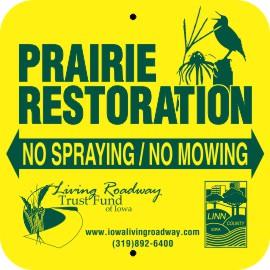From abandoned residential lots in Detroit and Youngstown to unused sections of public property in Houston and Louisville, municipalities are boldly trying the No-Mow approach to restore urban tree canopy, waterways, and native ecosystems (such as prairies).
Cities willing to take the progressive No-Mow approach incur perhaps one-hundredth the cost per acre than that of traditional landscape development. Cities transform entire neighborhoods as others grapple with individual lots.
Cities actually save money by canceling the schedules of mowing and leaf blowing on these properties. They may invest in “do not mow, reforestation in progress” signs to remind grounds crews and inform the public.
One of the most important things a shoreline property owner can do to protect water quality is to maintain or re-establish a native greenbelt along the shoreline of a lake or river.
A quick and easy way to start a greenbelt is to create a no-mow zone. Native grasses and wildflowers will be some of the first plants to appear. Benefits of greenbelts include:
- Attracting butterflies and birds;
- Encouraging fish spawning;
- Deterring non-migratory geese;
- Controlling noise;
- Providing privacy.
Image courtesy IowaLivingRoadway.com
See full blog by Matt Scandale in Sustainable Cities Collective.

